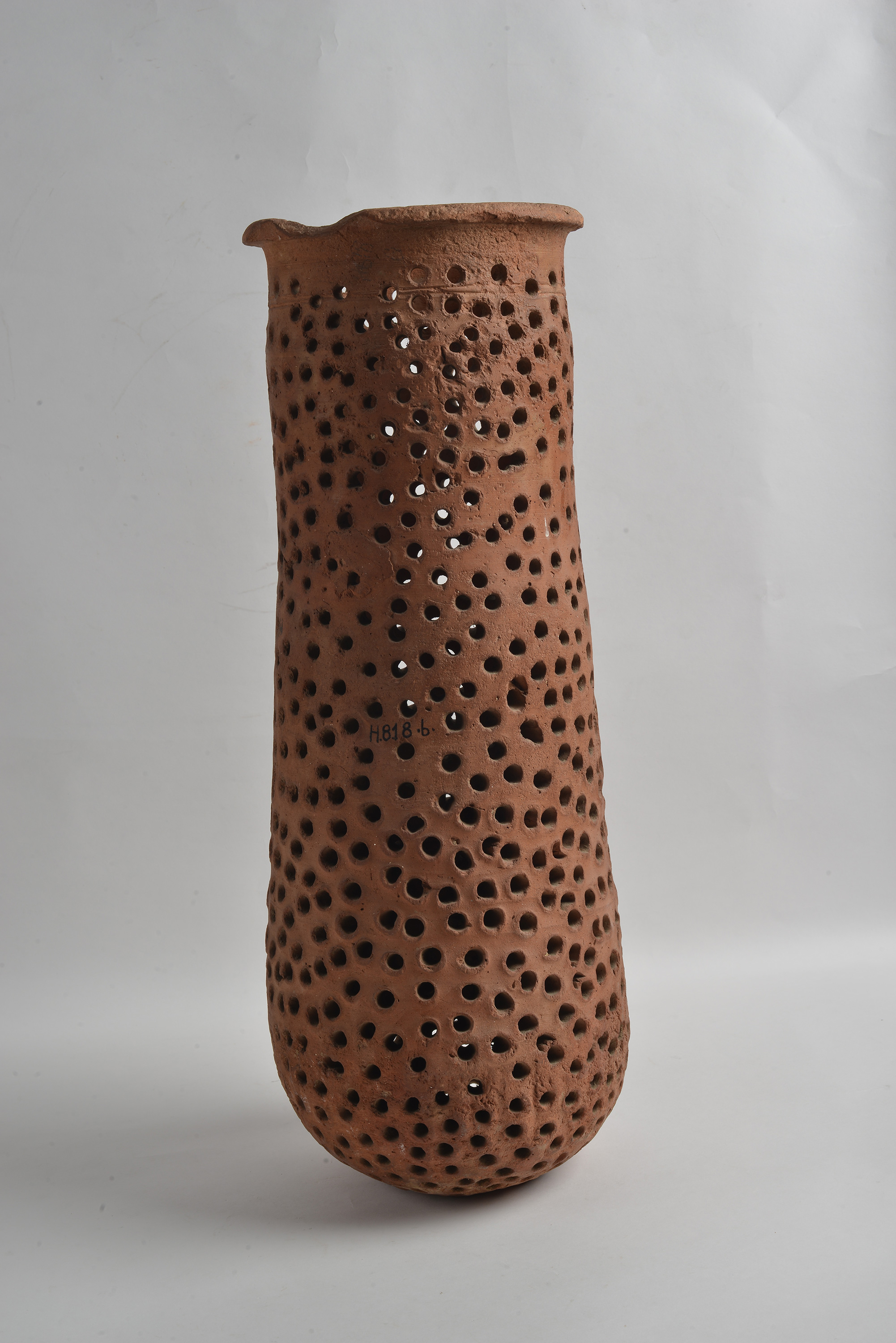Perforated Jar
Original Location: Harappa, Punjab, Pakistan
Present Location: National Museum, New Delhi
Date: 2500 BCE
Material: Terracotta
Objects: Pottery
Style: Harappan
Dimensions: H 15.9 x W 6.9 cm
Credits: National Museum, New Delhi
This artefact is a jar that has been perforated i.e. created with holes on its surface. It belongs to the Indus Valley Civilization which dates back to around 2500 BC. Made of terracotta, it is a large object measuring 15.9cm in height and 6.9cm width. One can currently find this artefact in the Indus Valley Civilization Gallery within National Museum, New Delhi.
What we call the Indus Valley Civilization today was not always known to us in the detail to which it is now. The geographical location of the excavation site was chanced upon many times and even minor excavation projects were carried out by archaeology-enthusiasts on their own accord but any artefacts recovered were discarded as historically irrelevant or belonging to a much later time period. It was only in the 1920s when Daya Ram Sahni and R.D. Banerji began excavating in modern-day Harappa and Mohenjodaro did the real importance of site come to be unearthed. The formal announcement of the discovery of the Harappan Civilization was made in 1924 by John Marshall, the then Director-General of the Archaeological Survey.
We are not sure what these jars used to contain but these can be associated with similar type of jars used contemporaneously to contain food items which need to be aerated, for example, red chillies. Alternatively, it believed that the perforated jar from Harappa, found often inside large bowls were perhaps being used as brewing equipment with the perforated jar wrapped in cloth, serving as a strainer. A large number of pots and jars of Harappan origin have been traced back to Mesopotamia which highlights the idea of a trade of objects from Mesopotamia.
This perforated cylindrical jar has a flat base with a singular hole in the centre of the base, the mouth of the jar is partly broken, presumably due to wear and tear over time. Most potteries in Harappan times were made of burnt clay. The Harappan pottery was typically fine, sturdy ware with a bright red slip (outer surface), decorated with black designs. The decorative patterns range from simple horizontal lines to geometrical drawings to pictorial decoration or perforations.
 Government of Indiaa
Government of Indiaa


 Recognizing the ongoing need to position itself for the digital future, Indian Culture is an initiative by the Ministry of Culture. A platform that hosts data of cultural relevance from various repositories and institutions all over India.
Recognizing the ongoing need to position itself for the digital future, Indian Culture is an initiative by the Ministry of Culture. A platform that hosts data of cultural relevance from various repositories and institutions all over India.
